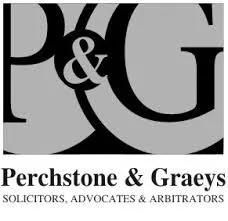What is the best evidence rule?
With the growth of commerce, disputes are bound to arise. When these disputes arise, parties involved approach the courts to ventilate their displeasures and enforce their rights. Parties to a dispute before a court of law are required to put forward evidence1 in support of their respective claims. Only by evidence is the court able to determine the claims of the parties. Generally, the parties in proof of their claims must tender the 'best evidence'2.
The best evidence rule is a rule of evidence, excavated from common law antiquities, that requires an original document, photograph, or other piece of evidence be introduced to the court to establish the truth of its content. In the case of oral evidence, it is the testimony of a witness who either saw, heard or smelt fact that is sought to be established that ought to be tendered.3 A classic example of the application of the rule is when you consider a plaintiff arguing that a specific provision of a contract never existed. The parties ought to produce the original contract, rather than a photocopy, to establish the veracity of that assertion.
The courts want to see the original evidence. If the original is destroyed or for some reasons inaccessible, a copy will be accepted. However, the copy must be proved by a witness who can testify as to the contents and confirm that it is an accurate copy of the original.
The purpose of the best evidence rule.
The purpose for the best evidence rule is to help ensure the court receives unaltered evidence that is legible, or clearly perceivable and not distorted evidence. This rule does not mean that secondary evidence like copies of documents or other evidence, like admissible oral hearsay evidence4 can never be used in court – only that, if the actual contents of that evidence is in question, the best evidence to prove it is the original where the proof is required to be by documents and if by oral testimony, it must be by the individual who has direct and firsthand knowledge of the facts sought to be proved.
By way of analysis, the proof of the occurrence of an event or fact that has been documented in writing, audio, or photographic evidence is not subject to the Best Evidence Rule. In other words, except the law specifically stipulates that only original documentary evidence is admissible in proof of the facts in issue5, any other means can be used in the alternative of the original. . Given that the piece of evidence is relevant, the court ought to consider its admissibility, even if it is not the best evidence. There are no categories of evidence, as between best evidence on the one hand and a lesser category on the other , when considering admissibility.
The categorization of evidence may only be relevant to ascertain the weight that should be accorded its credibility. What should govern admissibility is firstly to consider whether the piece of evidence is relevant, and more importantly there are no provisions in the Evidence Act that disallows its admissibility. Where a piece of evidence is irrelevant it ought to be immediately rejected. There is no room to consider whether it may be admissible by other provisions of the Evidence Act. That piece of evidence fails to cross the threshold test for admissibility.
Relevance is not a sole criteria for admissibility
It is often said that what governs admissibility of evidence is relevance6. It is common to hear Judges say , that piece of evidence is relevant, and it is therefore admissible or the contrary might be said; that piece of evidence is irrelevant and it is therefore inadmissible. Whilst the latter comment is correct, the earlier comment, equating relevance to admissibility, is incorrect. Relevance is only one of the factors that determine the admissibility of evidence. A piece of evidence may be relevant to the facts in issue but yet remain inadmissible because it has not met other requirements for admissibility.
Relevance is the 'first"' (not the only) requirement for admissibility of any evidence. This is so whether the piece of evidence is being tendered in a civil or criminal matter. Within the context of admissibility, relevance occupies a predominant role even though not an exclusive one. It is however irrelevant whether the piece of evidence is the best or not the best. See Elegushi v. Oseni (200S) 7 SCNJ 416 at 4367. Lord Denning MR says that "nowadays we do not confine ourselves to the best evidence. We admit all relevant evidence8. The goodness or badness of it goes only to weight and not to admissibility."9
To read the full article, please click here.
Footnotes
1. In Phipson on Evidence, 12th Edition "evidence" is defined and classified at pages 2-3 paragraphs 3-5 in the following language: "Evidence, as used in judicial proceedings, has several meanings. The two main senses of the word are: first, the means, apart from argument and inference, whereby the Court is informed as to the issues of fact as ascertained by the pleadings; secondly, the subject-matter of such means. The word is also used to denote that some fact may be admitted as proof and also in some cases that some fact has relevance to the issues of fact. In a real sense evidence is that which may be placed before the Court in order that it may decide the issues of fact.
2. Historically, in 18th century England, Philip Yorke, 1st Earl of Hardwicke – a prominent lawyer of the time – made the argument that no evidence should be admissible in court, unless it is " the best that the nature of the case will allow."
3. Lawrence Nwankpu & Anor. v. Dennis Ewulu & Ors. ( 1995) 7 NWLR (Pt. 407) 269
4. Admissible oral hearsays are evidence of a person who speaks as to the existence of a state of fact, rather than as to its truth. If Mr. A hears Mr,C say he saw Mrs B enter a building, it is admissible if Mr. A gives evidence that Mr. C said he saw Mrs B enter a building and no more than that. Subramaniam v. Public Prosecutor, Judicial Committee of the Privy Council, 1 W.L.R. 965 (1956). A.-G., Oyo State & 1 Ors. v. Fairlakes Hotels Ltd. & Or. (1988) 5 NWLR (pt.121) 255
5. See Section 3 of the Statute of Fraud that speaks to transfer of title to land.
6. Section 6 of the Evidence Act provides that: Evidence may be given in any suit or proceeding of the existence or non – existence of every fact in issue and of such facts as are hereinafter declared to be relevant.
7. C. B. Ltd. V. Alhaji Umoru Gwagwada (1994) 5 NWLR (pt. 342) 25. The State v. Onyeukwu (2004) 7 SCNJ P.A
8. Here, by 'we admit all relevant evidence', Lord Denning is speaking in the context of the Best evidence rule. It should not be interpreted to mean that once a piece of document is relevant, it will be admitted even if it fails to meet other criteria for its admissibility. In other words, Denning's statement should be read to mean, 'we admit all relevant evidence that have satisfied all other conditions for admissibility and the mere fact that it is not the best evidence does not render it inadmissible'.
9. Garton v. Hunter [1969] 1 All ER 451, [1969] 2 QB 37.
The content of this article is intended to provide a general guide to the subject matter. Specialist advice should be sought about your specific circumstances.




